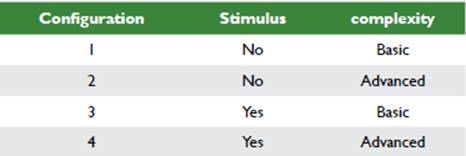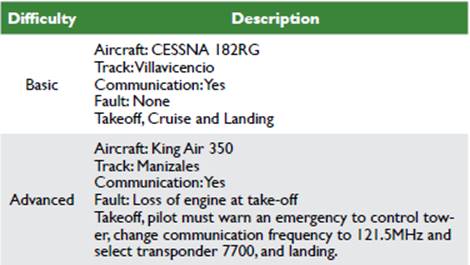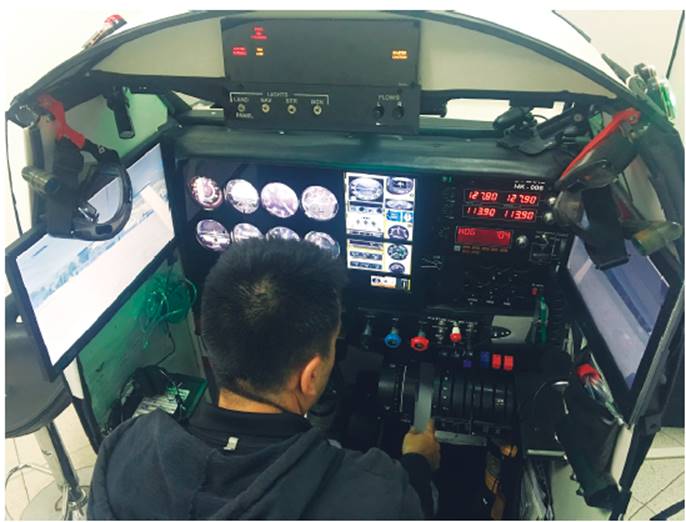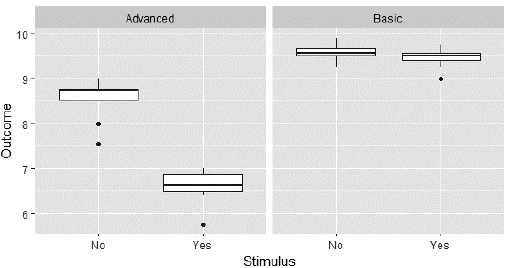The aircraft industry has been growing steadily on economic, social, cultural and political impacts. The continue growing of air transport have established metrics such as World Governance Indicators, the Social Progress Imperative and the Environmental Performance Index (Kiliç, Uyar, & Karaman, 2019). However, one of the most important indicators for the aviation industry is a safe operation in the air.
The air operations safety in each country has different requirements, but in all of them, medicines, hallucinogenic substances and alcohol consumption are banned. One of the most common diseases is the flu and to alleviate its symptoms, it is usual to prescribe antihistamines (AHs). The AHs are the established primary treatment for the symptomatic relief of allergic disorders such as flu, allergic rhinitis (AR) and urticaria. Prevalence rates of AR vary greatly across populations, with a range between 5 and 50% of the global population suffering from the condition (Mullol et al., 2008).
Different studies have established the influence that antihistamines have on the technical capacities to develop an activity. It has been found that the consumption of medicines or other substances diminishes the psycho-physical capacities, being a risk for the safety of the flights (Rogers et al., 2017). Some of the effects generated by the consumption of medicines are drowsiness and/or visual alterations. One of the most relevant studies has found that currently all substances such as medicine, alcohol and drugs are considered dangerous for aeronautical personnel because they generate adverse reactions that may involve decreased flight performance (Kapur, Parand, Soukup, Reader, & Sevdalis, 2016). The sedative effects of first-generation antihistamines at therapeutic dose levels are able to potentiate the CNS-impairing effects of ethanol in producing more performance decrement than the simple additive effects. (Pasko et al., 2017).
Biological samples collected from fatally injured pilots in aviation accidents involving all types of aircraft, including amateur-built aircraft, are submitted to the Civil Aerospace Medical Institute (CAMI) for accident investigation. The pilots percentage detected with prescription drugs was 26% for amateur-built aircraft, 16% for non-amateur built aircraft and 18% for all aircraft. Ethanol/drug use and medical condition were determined to be a cause or factor in 42 (11%) of the 385 ethanol/drug-positive amateur-built aircraft accidents investigated by the NTSB (Chaturvedi, Craft, Hickerson, Rogers, & Soper, 2013). However, aircraft mechanical failures are still one of the main accident causes (Australian Transport Safety Bureau, 2006).
In late 2001, the United States National Transportation Board (NTSB) and the United States Food and Drug Administration (FDA) considered the labeling of drugs that have the potential to impair performance (Qidwai, Watson, & Weiler, 2002). In addition, they need to analyze the effects of flu medicine as a factor involved in the reduction of neuromotor capacities in pilots.
For the Colombian context, the aeronautical regulation differs from the USA regulation. In this sense, the Colombian regulation, which is the RAC 215, sets the service of routes, the navigations systems, the national regulations and the airside requirements (Reglamentos Aeronáuticos de Colombia," Aeronaútica Civil, Bogotá-Colombia, 2018). In addition, the RAC 13 says that any aeronautical license holder must inform if anybody is on medical treatment with prescribed medications (Reglamentos Aeronáuticos de Colombia," Aeronaútica Civil, Bogotá-Colombia, 2018).
Previous studies have identified factors that may cause low-performance in pilots maneuvering abilities. Lopez, Previc, Fischer, Heitz, y Engle, (2012), analyzed the cognitive performance of ten air force pilots in a simulator. The authors found that the lack of sleep and fatigue are an important element that affects pilots' capabilities and should be taken into consideration to prevent air accidents. Similarly, the fatigue is one of the major causes of stress in pilots. Wilson, Caldwell, y Russell, (2007) conducted a study to establish that performance measures for fatigue are correlated positively due to the difficulty of the task. Therefore, the authors conduct a psychomotor surveillance test in two experimental emulators, a battery of multi-attribute tasks and a static single-task aircraft simulator. The research concluded that the multi-attribute task represents a higher effort and decrease profoundly the pilot performance.
Beside the lack of sleep and fatigue, the age also influences the pilot performance. Causse, Dehais, y Pastor (2011) executed a test involving age ranges in order to find a correlation within flight performance. These found that pilots over fifty-five years tend to have lower performance compared to younger pilots.
The pilot diet and body comfort are other factors that influence pilot's performance. Lindseth et al. (2011) conducted an experiment that set a specific diet. This study concluded that a high-fat and carbohydrates diet generates better cognitive performance compared to a high-protein diet. On the other hand, body comfort and temperature are also factors that influence psychological and motor performance, especially when they are in more difficult situations (Li et al., 2015; Faerevik & Reinertsen, 2003; Landman, Groen, van Paassen, Bronkhorst, & Mulder, 2017; Petruzzello, Gapin, Snook, & Smith 2009).
Recently, researchers have shown an increased interest in aviation accidents, because they are recognized as the most tragic accidents among all modes of transportation due to their severity and the high number of injuries and deaths (Ud-Din & Yoon, 2018). In addition, some toxicological studies of the Federal Aviation Administration (FAA) indicate that from 1475 fatal air accidents between September 30, 2008, and October 01, 2014, about 582 are related to the consumption of first-generation anti-histamines. In addition, the FAA indicates that the use of first-generation antihistamines has as secondary effects vestibular illusions, spatial disorientation and cognitive impairment (Gildea, Hileman, & Paskoff, 2018).
Working in the aviation industry produces extra stressors such as, varying schedules, time away from home, and jet lag, which are all unique to the aviation industry. However, there is no denying that pilots, along with others that work in high-standardized industries, operate with an extremely small margin of error. It was not until 2010 that pilots suffering from depression were able to receive prescribed medication and remain on flight duty. This led to concern within the industry that pilots may not be reporting mental health issues as to avoid being grounded and losing their livelihood (Winter, Rice, Rains, & Milner, 2017).
Many researchers have used simulators to measure the training of some activity. The aeronautical industry was one of the pioneers in the training of non-technical skills in simulation, in which it was recognized that the training of pilots only in high-level technical skills was not enough to ensure the safety of passengers (Helmreich, 1997). As for drug efficacy tests in different investigations it has been determined that to measure drug efficacy it is necessary to have two groups to which one to test the drug (treatment group) and another takes a placebo drug (control group). However, the different drugs are currently being tested using medical devices that allow the formulation of the drug to be optimized according to established parameters (Wang et al., 2019; Martínez-Cuadrón et al., 2019).
For these reasons, it is crucial to control the medicine consumption of pilots after, before and during on flight. So far, the researchers have paid attention the decrease of capabilities due to medications (i.e. antihistamines), or the low-performance caused by fatigue and task difficulty, separately. However, no studies have been found relating pilots performance under medications varying task complexity. Then, the aim of this study is to get insights of influence on consumption of flu-medicine and the pilots' performance during their professional practice.
In this paper, we evaluated the potential influence of flu-medicine in the flight performance. For this, we carried out a controlled experiment in a static flight simulator considering the influence of a well-known antihistamine. This document is organized as follows. Section 2 presents the experiment protocol, the materials, methods and data collection procedure. The results of the experiment are presented in section 3. In Section 4, we made a discussion related to the experiments results and its limitations. At the end, Section 5 rounds up the paper with the conclusions and points out the main challenges to be addressed as future work.
Materials and methods
A. Materials
The development of this study was carried out in a static flight simulator of the company B-Plane (Bogota, Colombia). Two types of aircraft were configured depending on the type of test, CESSNA 182RG and King Air 350.
B. Method
Description of the sample
Eights pilots with an average flight hour of 2835 ± 801 experience were selected. The volunteers were four men and four women in the 25 - 50 years age range.
Study Factors
The test had two different stimuli: medication consumption and the complexity of the test. Different test configuration is shown in table 1. We use two levels of test complexity to evaluate if medicament consumption affects in the same way in different real flight situations.
A treatment group (medication intake) and a control group (placebo intake) were determined. Both groups performed the tests at different levels of difficulty.
The medication used was PAX Noche® that contains chlorpheniramine maleate 2 mg. As the active ingredient, it has chlorpheniramine, which is a primary generation of anti-histamine with some side effect like somnolence, dizziness.
Regardless to task difficulty, basic tasks is represented in a CESSNA 182RG single-engine plane on the runway Villavicencio city. Advanced task is represented in a King Air 350 twin-engine with a failure in one engine during take-off on the runway Manizales city, which is 7000 feet high and is surrounded by mountains, being of greater difficulty compared to the first runway. Moreover, the pilots had to communicate with the control tower by radio during the flight. Table 2 shows the procedure for each difficulty in more detail.
Each pilot carried out the four different tests, two under the consumption of the medicine and the other two under placebo consumption.
Test Design
The static flight simulator has projectors that show the landscape related to the runway, with three monitors representing the cockpit, the right and left view of the plane and the control console. In relation to the medicine, several boxes containing the flu medicine were purchased, so that they all belong to the same batch to avoid variations.
In addition, as the experiment can take several days of data collection, we ensured that the environment was the same for all test and we recommended the pilots to sleep at least 7 hours and to maintain a balanced diet.
Type of experimental design
We collected 32 observations under a 22 within-subjects factorial design.
Evaluation of performance
For this experiment, the response variable is the pilot's performance, evaluated with a score varying from zero to ten, where zero is the lowest score and ten the highest. Flight instructors made the assessment and established the score based on the rubrics of aircraft manuals. At the test beginning, the instructor verified whether the participants had knowledge about basic as descriptive information of airplane, its components, height level, overall length, wheelbase length, etc. Besides, the evaluation was made with airspeed limitations, communication with control tower, the powerplant describes maximum continues power, weight and loading distribution, flight limits authorized maneuvers with the right speeds, flight load factor limits and kinds of operation limits.
Results
A. Descriptive analysis
In the descriptive analysis of the data, differences are shown between the data obtained for the stimulus and difficulty factors, with respect to test score. Boxplot in figure 2 shows that there were differences in the performance during the development of each type of test. In the test with stimulus and without stimulus, the performance rating of the maneuver was 8.02 ± 1.51 and 9.06 ± 0.654. In the case of basic and advanced difficulty, the scores were 9.52 ± 0.217 and 7.56 ± 1.10 respectively.
Carrying out the analysis from the stimulus and difficulty combination, it was obtained, when there is no stimulus and the difficulty is basic, the score is 9.59 ± 0.192; without stimulus and advanced difficulty 8.53 ± 0.491; with stimulus and basic 9.45 ± 0.23. Finally, with stimulus and advanced 6.58 ± 0.399. It observed a decrease in the basic skills test that is not as evident as in the advanced test. For this reason, the finding of the current study suggests that it is possible that at an emergency time, they do not have the necessary skills to meet the needs of the moment. Boxplot are shown in figure 2.
B. Inferential analysis
Model effects
Inferential analysis of the data was performed based on the effects model (Equation 1). For this, the following hypotheses were determined.
Equation 1 present the response variable y ijk explained by µ, the response mean, τi the effect of the medicament, αj the effect of task complexity, (τα)ij the effect of the interaction term, β k the effect of the difference of each pilot and ε ijk , the random error.
Proof of assumptions
We used the Levene tests for homoscedasticity, results show that the variance is equal across the groups (p>0.05). To determine the residuals normality, we used the Kolmogorov-Smirnov test, which results indicate that they can be considered as normal (p>0.05). Due the assumptions of ANOVA are met; we use this approach to analyze the results of this factorial design using software R.
The ANOVA results show that there is a significant effect of medicament consumption F(1,21) = 65.292,(p<0.05), difficulty level F(1,21) = 230.827,(p< 0.05) and interaction between the stimulus and the difficulty level F(1,21) = 49.222 (p<0.05).
Discussion
Results show that both, the medicament consumption and the task difficulty have a significant effect in the task score. Boxplot shows that, under medicament consumption the performance was lower. Moreover, task scores were significantly lower when the task was complex.
In addition, the Medicament-Difficulty interaction was also significant. Based on the boxplot, this means that the medicament consumption has a bigger effect when the task is complex.
We observed that participants taking the medication did not have the same energy to do the tests. In particularly the flu drugs generate drowsiness, loss attention. Further, the decisions took under effects medication on the advanced test for pilots were not appropriated, caused a total or partial plane damaged or going off the landing track.
It is relevant to mention that the results obtained showed that there is a relationship between the consumption of anti-flu drugs and fatal accidents. This can be supported from the accidents reported by the Federal Aviation Administration of United States when they associated some aircraft accident with consume of antihistamines (Gildea et al., 2018).
Conclusion
In this research, we studied the effect of a flu medicament consumption, PAX Noche® which is a primary generation of antihistamine with some side effect like somnolence, on the pilots' performance during a simulated test.
Results show that if a pilot is under this kind of medication their performance will decrease 11%. Moreover, the performance decrease will be bigger if the task is considered complex 23%. Evidence suggest that antihistamine consumption should be considered as a fundamental factor in the professional practice of pilots, as it can affect flight safety. It is suggested that aeronautical entities and risk centers must consider avoiding pilots to flight when they are consuming this kind of medicament.
We suggest for future research to use a larger sample and evaluate more levels of task complexity. It is also needed to study factors such as pressure and hypoxia.




















